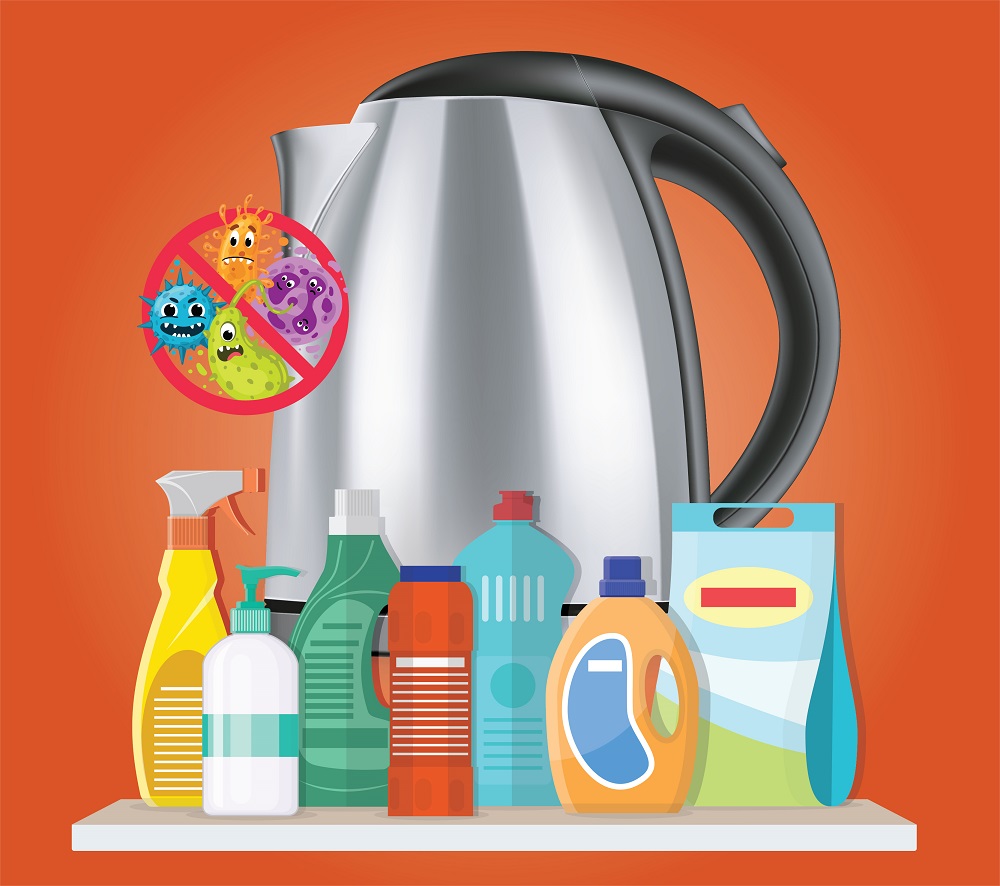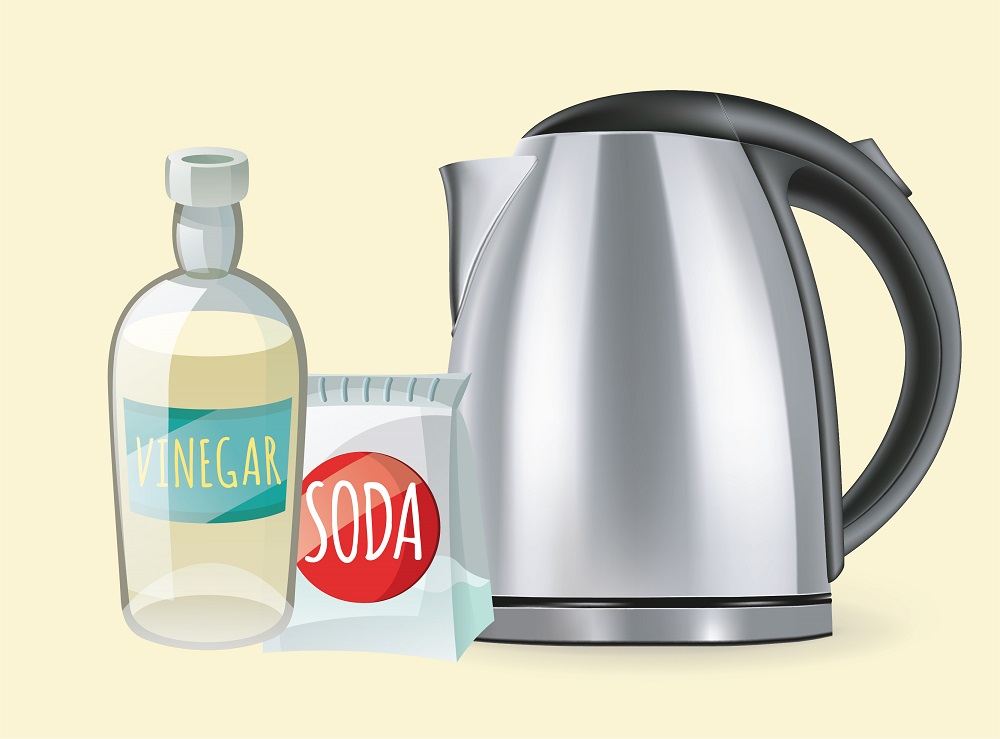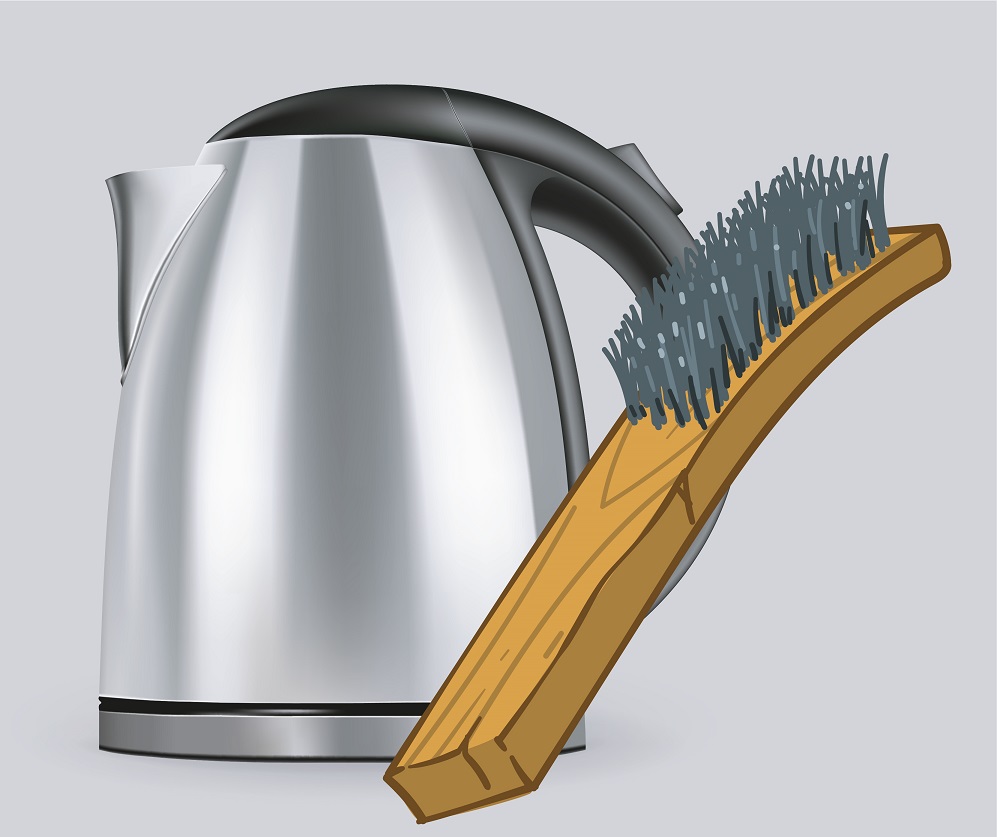- If you own anything made of stainless steel, you’ll always want to make sure the stainless steel doesn’t get destroyed, especially by rust. In this article, we’ll be discussing how rust can destroy your stainless steel and what you can do to get rust out of your stainless steel tea kettle.
- We’ll also be looking at the benefits and drawbacks of the stainless steel material and why it is regarded as the best material you can get your hands on in the appliances market right now.
A kettle is one of the most-used kitchen items and due to the frequent usage, you might find yourself washing it too often. This is not the case for everybody as some can confidently leave their kettles for weeks, or in some cases, months, without even touching it. Others might only pay attention to the outer parts of the kettle without taking a peek at what the inside might look like. If you pay too much attention to only the outer parts, you will later realize that limescale might have built upon the layer of the inner part of the kettle. In the end, you’ll have a rusty kettle and this is not safe for so many reasons, especially health-wise.
According to Scientific American, all stainless steels have at least 10 percent of chromium which denies oxygen and water enough access to the underlying metal surface and as a result, prevents it from additional corrosion. A stainless steel kettle enjoys the same privilege as a substantial amount of chromium oxide is also present both in and out. Needless to say, the chromium oxide also often serves as the protecting shield for your stainless steel kettle, protecting it from corrosion and rust. However, don’t be fooled by the name “stainless steel.” A stainless steel item can still get stained by so many things. Reason being that if your stainless steel kettle is exposed to too many constant stains, the chromium oxide can wear out and the likes of rust and corrosion can begin to set it. Rust, particularly, can completely destroy your stainless steel kettle. If you don’t correct it as soon as you can, you might be forced to throw the kettle in the trash bag.
Rust can be so annoying and hard to deal with but it shouldn’t mark the end of your stainless steel kettle. We’ve outlined some of the best ways to remove rust from tea or electric kettle. But before we go into that, let’s look at what rust and how it’s formed.
What is Rust?
According to Wikipedia’s definition of rust, it is an iron oxide that is formed by the combination of oxygen and iron, with water or air moisture acting as the catalyst. A stainless steel item can be exposed to rust for so many reasons. We’ll be discussing some of them below.
Chemicals
Once your stainless steel kettle is exposed to chemicals like chlorine or bleach cleaners, it can destroy the chromium present in it and as a result, you’ll have rust in your tea kettle. This is why it’s clearly stated in every manual of stainless steel appliances to avoid using chemicals when cleaning them. You need to make sure you’re cleaning with the right stainless steel cleaners to avoid turning your stainless steel kettle into a rusty one.

Not cleaning your kettle properly
Cleaning doesn’t end in using all sorts of cleaning methods. Cleaning also involves proper rinsing, especially when you’ve just used natural cleaners like baking soda and vinegar. Leaving residue from these cleaners on your stainless steel kettle will only bring more harm than good sooner or later. When the residue reacts to the oxygen in the air, rust begins to form. This is not in any way good for your stainless steel kettle and it’s only a matter of time before you have rust all over it.
Cleaning with a wire brush
Cleaning your stainless steel kettle with a hard brush will only leave you with more things to worry about. The particles formed on the surface of your stainless steel when you clean with a wire brush will form rust when they are exposed to air or water.

Preventing Rust on Stainless Steel
We stated the importance of not getting carried away by the term “stainless.” A lot of people grew up thinking that stainless steel materials couldn’t have stains. We’ve realized that the possibility is far-fetched and even stainless steel items can get stained. What is true is that there’s a chromium oxide layer in every stainless steel item which gives it the protection it needs to shrug off stains. Also, any damage done to the chromium oxide can be corrected because the chromium oxide can self-heal once the source of the stain has been dealt with. If you’ve had a series of occurrences with rust, you’ll be forced to always take preventive measures against them. In order to prevent your stainless steel from rust, below are some of the things you can do;
Invest in high-grade stainless steel
One of the best ways to make sure you don’t risk having rust on or in your stainless steel kettle is to invest in quality stainless steel. Stainless steel items are always made in different grades and the higher the grade, the more expensive it is. This means that although you’re likely to spend more, you’ll reap the dividends in the end because it’s going to serve you for a long time.
Don’t clean with chemicals
We can’t overstress the importance of not cleaning your stainless steel kettle with chemicals because it’ll expose the chromium oxide present in the stainless steel to all kinds of stains including corrosion and rust. There are professional stainless steel cleaners you can try. Also, there are other natural ways to go about things such as baking soda and vinegar, both of which have proved to be effective over the years.
Click here to read about how to remove stains from stainless steel pans.
Don’t leave residues on the surface of your kettle
Leaving residues of what you’ve just used in cleaning your kettle will only invite rust once they’re exposed to water particles or air molecules. This often happens when you don’t rinse your kettle properly after you must have washed it. You need to ensure that you clean thoroughly by rinsing through carefully after every cleaning session. The best thing is to rinse at least twice to make sure there are no residues left on the surface of your stainless steel kettle.
Benefits of a Stainless Steel Kettle
In this modern era, the world has grown fond of stainless steel items in and around the home, and one of them is a stainless steel kettle. Naturally, a kettle is versatile kitchen cookware that is used to prepare much liquid-based food, including coffee and tea. Incorporating stainless steel in modern kettles has been one of the best things in recent decades. There are so many benefits you’ll get to enjoy when you own a stainless steel kettle and we’ll be exploring some of them below;
It is durable
One thing we all know about stainless steel material is that it is very durable. This explains why it is often more expensive than the other materials but it’s usually good for the long term. If you buy a high-grade stainless steel kettle, it can serve you for so many years, provided it gets good maintenance. Naturally, the presence of chromium oxide in stainless steel gives it the protection it needs from discoloration, scratches, corrosion, and rust to mention but a few. As long as the self-healing chromium oxide continues to be present in stainless steel, protection is guaranteed, although you need to regularly clean your kettle to make sure the chromium oxide doesn’t wear off.
It is light
A stainless steel kettle is lighter compared to cast iron and that also makes it a great choice. You don’t have to worry about weight when you own a stainless steel kettle as it can be easily moved around with little to no effort when there’s no content. This is one of the many benefits you’ll get to enjoy when you own a stainless steel kettle.
It is easy to clean
Another thing people appreciate in a stainless steel kettle is that it is very easy to clean. Every stainless steel appliance is easy to clean and with basic cleaners like dishwasher soap and water, you can make your stainless steel kettle sparkling clean again. As a result of that, stainless steel kettles have remained population options on the cookware market and that explains why a lot of people often opt for them.
It complements other appliances in your kitchen
Any stainless steel item you have in your kitchen space will add a touch of class to your space. The good thing is that a stainless steel kettle will match not only the other stainless steel items in your kitchen space but the ones with different colors as well.
How to remove rust from stainless steel kettle
There are different natural ways to remove rust from cast iron or stainless steel tea kettle. You’ll be surprised that your regular cleaning using soap and water might not be enough, especially on the inside as residues from hard water can cause stubborn stains, and rust in the long run. For so many reasons, you can’t afford to leave the inside of your tea kettle with rust. The most important reason is that it is not healthy and the best thing is just to make sure you get rid of it as soon as it starts to develop.
Although there are many ways to go about this, we’ll only be focusing on two methods; vinegar and baking soda methods.
Vinegar
You can’t talk about the most effective cleaning methods without mentioning vinegar. It is one of the most used natural cleaners available and a lot of people have utilized that. Its versatile nature has made it a popular choice in different households as it can be used to remove stains, general cleaning, and also remove rust, which is why we’re discussing it in this article.
To get through this process successfully, you’ll need the likes of water, soft towels, soft scrubbing pads, and most importantly, white vinegar.
DIRECTION
STEP 1: Add a substantial amount of white vinegar and water to the kettle, put it on your stovetop, and bring it to a boil.
STEP 2: Wait for at least 5 minutes before you turn off the heat.
STEP 3: Allow the liquid to cool off to a safe temperature, then dispose of it.
STEP 4: This is the most important step. You don’t need to use a hard scrubbing pad. If you can’t get your hands on a soft pad, just opt for a soft towel instead. Use this soft towel to wipe the rusts from the inner part of the kettle. We figured your hand might be too big to enter the kettle and if this is the case with you, put a damp cloth in the kettle and close the lid. Shake the kettle until you’re sure every inch of the inner part of the kettle has been touched.
STEP 5: Turn the kettle upside-down so the liquid can come on out and you can pull out the soft towel
STEP 6: Vinegar residues can cause more rust. The only way to avoid that is to rinse completely with enough clean water and make sure nothing is left inside the kettle.
Baking Soda
Baking soda is another natural cleaner that works very effectively. Alongside vinegar, it is regarded as one of the most popular natural cleaners due to its versatile nature. With baking soda, your stainless steel kettle will be left sparkling like brand new. The good thing is that once you rinse properly with water after you must have finished using baking soda and you don’t have residues in the kettle, you wouldn’t have anything to worry about.
To use this method, you will, of course, need baking soda, soft towels, water, and if possible, a bottle scrubber.
DIRECTION
STEP 1: One cup of baking soda is the ideal amount for this process. Pour it inside the kettle and fill it with water.
STEP 2: Bring the content of the kettle to a boil and leave this process to last for at least 10 minutes before turning off the heat on it.
STEP 3: It is always safe to allow the temperature to come down to a safe point before engaging in this step. A soft brush will help you do the trick here. Use it to gently scrub the inside of the kettle until you cover every inch.
STEP 4: If you have any rust left, you can repeat step 3 but if you don’t, just make sure you rinse your stainless kettle properly to avoid residues building up again. If these residues are left uncorrected, they will be exposed to air or moisture after rust will start to form if you stainless steel kettle again.
STEP 5: Once you’ve rinsed properly with clean water, use your soft towel to dry the kettle.
Frequently Asked Questions
1. Can I use my tea kettle if it has rust inside?
Rust is most likely not to harm you as rust is iron oxide and iron is an essential nutrient. However, a lot of people don’t often believe this and that’s why getting rid of any rust in your tea kettle is very important.
2. Is rust in a tea kettle dangerous?
No, it isn’t. Rust can’t cause you any harm but regardless of that, you shouldn’t condone it in your tea kettle because too much of it can bring about some health conditions.
3. Why does my tea kettle rust so quickly?
One of the things that cause a tea kettle to rust quickly is hard water. Most of the time when you boil hard water with your tea kettle, there are likely to be some residues left in the kettle and once they’re exposed to air, they begin to form rust.
Conclusion
Having rust in your stainless steel kettle can be annoying. Although rust has proved not to be harmful, at least in small quantity, a lot of people still can’t cope with having it in their tea kettles. Apart from raising health concerns, rust can cause you to start washing your kettle more often than you expect. To avoid this, we’ve helped you highlight the best two natural ways to get rid of rust from your stainless steel kettle and we hope that you’ll find them helpful.
21 MINUTES
ESTIMATED TIME DESIGNING AND UPLOADING THIS ARTICLE
11 HOURS 49 MINUTES
ESTIMATED TIME RESEARCHING AND WRITING THIS ARTICLE
You Might Also Like
